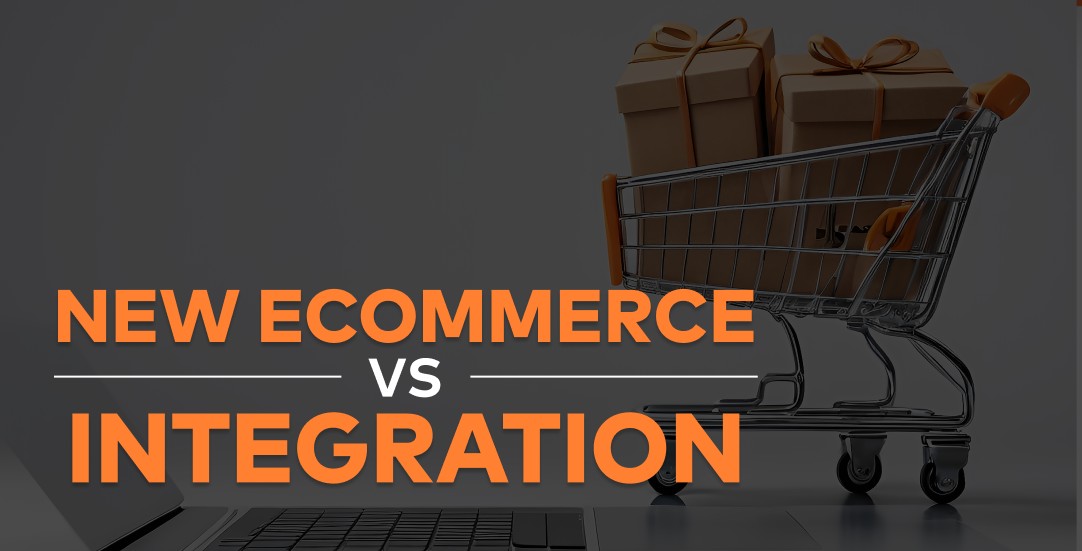Which is harder: setting up a new e-store or integrating e-commerce with other systems?

Digital transformation is not simply about jumping on the latest technological bandwagon or retrofitting IT technologies to adapt to an online business model. While setting up an e-store is a crucial step in getting your business digital-ready, it is only the tip of the iceberg. The real challenge often lies in integrating this new platform with other systems, a process that can be both complex and filled with obstacles.
E-store setup is the simple part
Today, establishing an e-store is a relatively straightforward process. Convenient e-commerce platforms such as Shopify or WooCommerce have simplified the task enormously, providing ready-made templates and user-friendly interfaces. Such solutions enable even the most non-tech-savvy individuals to create a functional, visually appealing, and customer-oriented online store.
However, this simplicity should not mask the fact that operating an online store effectively goes far beyond just having a nice-looking interface. To maximize its potential, the e-store must be seamlessly integrated with various other business systems.
The more complex side of eCommerce: system integrations
The integration of an e-store with other systems is a demanding process. These systems may include Customer Relationship Management (CRM) tools, Enterprise Resource Planning (ERP) systems, accounting software, logistics and delivery systems, inventory management tools, and others. The complexity arises in connecting distinct systems, each with its own unique flow of data and interface.
The aim of integration is to streamline business operations, ensuring accurate data flow, and improving customer experience. However, achieving this can be more challenging than initially anticipated.
Common difficulties with e-commerce integrations
Perhaps the most common difficulty with e-commerce system integration lies in its inherent complexity. It’s not just about linking one system to another, but about ensuring a smooth, streamlined, consistent flow of data between them. This can become challenging when dealing with disparate systems, each designed to operate in its own way.
Another common challenge is the need for customization. While ready-made e-commerce integratorsolutions do exist, they often don’t meet all the nuanced needs of a particular electronic store. Custom integration requires technical know-how and can be a costly and time-consuming process.
Moreover, integrating e-store systems can lead to potential security risks. With more systems linked together, the potential for security breaches increases. It is therefore crucial to ensure that any integration complies with necessary security standards and protocols.
Lastly, integration projects often encounter resistance due to the required changes in work practices. Ensuring that all stakeholders are on board and understand the benefits of integration can be a tough task, especially in companies with deep-set traditional business processes.
How integrations influence website functioning
Setting up a new e-store and integrating it with other systems are both challenging endeavors, but they pose different hurdles. One major consideration is how integrations affect the functioning of a website. Integrating with other systems involves connecting various components, such as payment processors, inventory management systems, and shipping providers. While these integrations can streamline operations and enhance user experience, they also introduce complexities. Different systems may require custom development, API integrations, and compatibility testing to ensure a seamless flow of information. Failure to address these challenges can lead to disruptions in website functionality, hampering the e-store’s effectiveness.
Systems may be cannibalized if they are integrated incorrectly
Another factor to consider is the risk of cannibalizing systems if e-commerce integrations are executed incorrectly. When integrating with other systems, a careful approach is needed to avoid conflicts and redundancies. If integrations are not planned and implemented incorrectly, different systems may end up duplicating functionalities or conflicting with one another. This can result in operational inefficiencies, data inconsistencies, and potential customer dissatisfaction. It’s crucial to thoroughly understand the requirements of each system and plan integrations accordingly to avoid cannibalization.
You will need an experienced e-commerce integrator
While setting up a new e-store can seem straightforward, the real challenge lies in integrating it with other systems. The process demands substantial investment in time, resources, and expertise, given its inherent complexity, the need for customization, potential security risks, and potential resistance to change. Despite these hurdles, successful integration is a crucial ingredient in optimizing the performance of an e-store and in the smooth running of any online business. Embracing this challenge is essential for a successful digital transformation, and it is a key factor to gain an edge over the competition.
Need help bringing your eCommerce services to the next level? We’ve got you covered, contact us.













